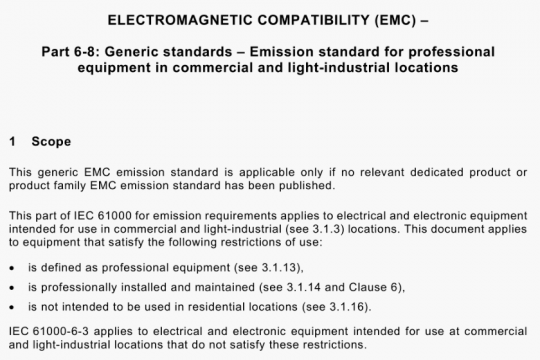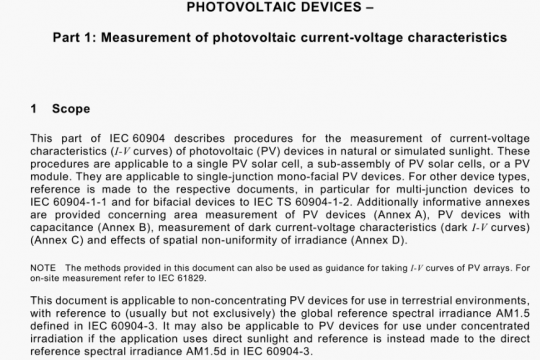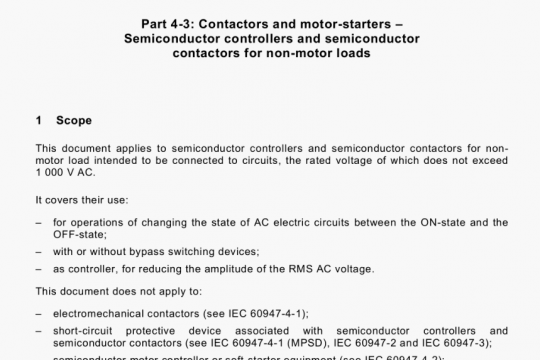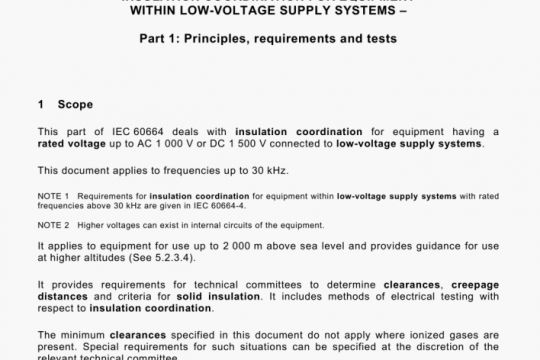DD IEC TS 60034-17:2002 pdf free
DD IEC TS 60034-17:2002 pdf free.Rotating electrical mac hines Part 17: Cage induction motors when fed from converters – Application guide.
The following referenced documents are indispensable for the application of this document. For dated references, only the edition cited applies. For undated references, the latest edition of the referenced document (including any amendments) applies.
IEC 60034-1:1999, Rotating electrical machines — Part 1: Rating and performance
IEC 60034-6:1991, Rotating electrical machines — Part 6: Methods of cooling (IC Code)
IEC 60034-12:1980, Rotating electrical machines — Part 12: Starting performance of single-
speed three-phase cage induction motors for voltages up to and including 660 V
Amendment 1 (1992)
Amendment 2 (1995)
IEC 60072 (all parts), Dimensions and output series for rotating electrical machines
3 Characteristics of the motor
The output current of a current source converter passes through the stator winding of the motor during the commutating period. Therefore, a knowledge of the motor equivalent circuit is important for the design of the commutating circuits.
In the case of voltage source converters, a knowledge of the motor equivalent circuit is not normally important for the design of the commutating circuit, but the harmonic impedances of the motor greatly influence the losses caused by harmonics.
The above conditions are relevant for the basic operation capability of the drive. If details are required of the additional torques (in particular oscillating torques) and of the additional losses, which occur during converter operation, then a knowledge of the equivalent circuit parameters of the motor covering the harmonic spectrum will be necessary.
Due to the existing design variants of cage induction motors with design N (e.g. copper deep- bar rotors and aluminium double-cage rotors are used) and due to the wide frequency range of the most important harmonics (band width from 0 up to 30 kHz), a generally valid motor equivalent circuit cannot be specified. As a rule it is not admissible to use the quantities from the equivalent circuit for steady-state operation at system frequency (e.g. with leakage inductances for normal running) in order to calculate torques and losses due to harmonics. The motor manufacturer may provide appropriate values of the equivalent circuit only if the frequency spectrum of currents and/or voltages generated by the converter is known.
4 Frequency spectrum of voltage and/or currents
With respect to the necessary torque derating and to the oscillating torques excited by harmonics, it is important to know the relative harmonic content of motor voltages and/or currents compared with those during operation on a sinusoidal supply voltage.
Figure 1 shows the typical waveform of the motor phase current in the case of a current source converter drive. The produced harmonics are of the order n = 5; 7; 11; 13… The relative harmonic content depends mainly on the commutating time interval which may differ in different drives.
Figure 2 shows the typical waveform of the motor phase voltage for operation with a synchronised pulse pattern where the harmonics are of the order n = 5; 7; 11; 13…
In the case of voltage source converters a variety of pulse patterns is in use (which may be varied within the frequency setting range). Hence it is not possible to make global statements on the effects of the harmonics. For definite statements the harmonic content of the converter output voltage has to be known and its consequences on the motor shall be studied.DD IEC TS 60034-17 pdf download.




